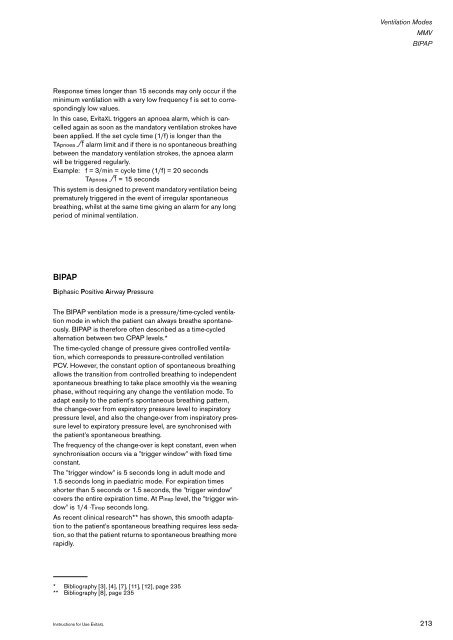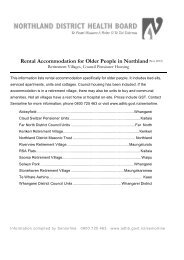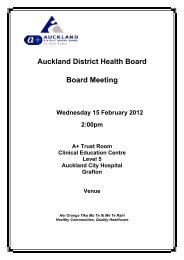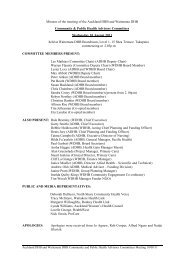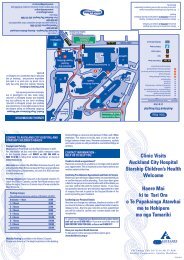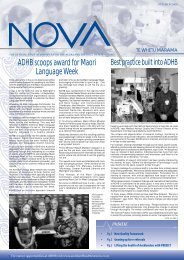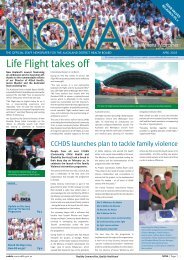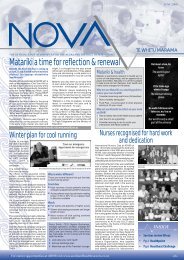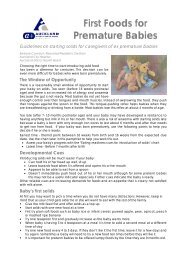EvitaXL
EvitaXL
EvitaXL
Create successful ePaper yourself
Turn your PDF publications into a flip-book with our unique Google optimized e-Paper software.
Response times longer than 15 seconds may only occur if the<br />
minimum ventilation with a very low frequency f is set to correspondingly<br />
low values.<br />
In this case, <strong>EvitaXL</strong> triggers an apnoea alarm, which is cancelled<br />
again as soon as the mandatory ventilation strokes have<br />
been applied. If the set cycle time (1/f) is longer than the<br />
TApnoea W alarm limit and if there is no spontaneous breathing<br />
between the mandatory ventilation strokes, the apnoea alarm<br />
will be triggered regularly.<br />
Example: f = 3/min = cycle time (1/f) = 20 seconds<br />
TApnoea W = 15 seconds<br />
This system is designed to prevent mandatory ventilation being<br />
prematurely triggered in the event of irregular spontaneous<br />
breathing, whilst at the same time giving an alarm for any long<br />
period of minimal ventilation.<br />
BIPAP<br />
Biphasic Positive Airway Pressure<br />
The BIPAP ventilation mode is a pressure/time-cycled ventilation<br />
mode in which the patient can always breathe spontaneously.<br />
BIPAP is therefore often described as a time-cycled<br />
alternation between two CPAP levels.*<br />
The time-cycled change of pressure gives controlled ventilation,<br />
which corresponds to pressure-controlled ventilation<br />
PCV. However, the constant option of spontaneous breathing<br />
allows the transition from controlled breathing to independent<br />
spontaneous breathing to take place smoothly via the weaning<br />
phase, without requiring any change the ventilation mode. To<br />
adapt easily to the patient's spontaneous breathing pattern,<br />
the change-over from expiratory pressure level to inspiratory<br />
pressure level, and also the change-over from inspiratory pressure<br />
level to expiratory pressure level, are synchronised with<br />
the patient's spontaneous breathing.<br />
The frequency of the change-over is kept constant, even when<br />
synchronisation occurs via a "trigger window" with fixed time<br />
constant.<br />
The "trigger window" is 5 seconds long in adult mode and<br />
1.5 seconds long in paediatric mode. For expiration times<br />
shorter than 5 seconds or 1.5 seconds, the "trigger window"<br />
covers the entire expiration time. At Pinsp level, the "trigger window"<br />
is 1/4 ·Tinsp seconds long.<br />
As recent clinical research** has shown, this smooth adaptation<br />
to the patient's spontaneous breathing requires less sedation,<br />
so that the patient returns to spontaneous breathing more<br />
rapidly.<br />
* Bibliography [3], [4], [7], [11], [12], page 235<br />
** Bibliography [8], page 235<br />
Ventilation Modes<br />
MMV<br />
BIPAP<br />
Instructions for Use <strong>EvitaXL</strong> 213


